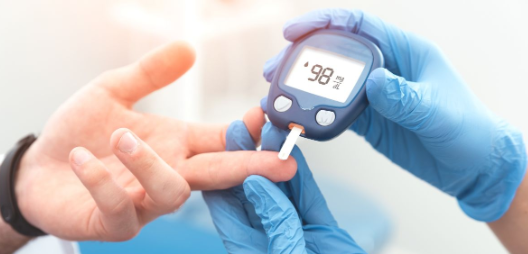Type 2 diabetes is a chronic condition that affects millions of people worldwide. Managing blood sugar levels effectively is crucial for preventing the complications associated with this condition, such as heart disease, kidney damage, and nerve damage. Over the years, various treatments have been developed to help people with type 2 diabetes manage their blood sugar levels. One of the more recent and effective medications is Jardiance (empagliflozin).
Jardiance is part of a class of drugs known as SGLT2 inhibitors, which help control blood sugar levels by preventing the kidneys from reabsorbing glucose into the blood. By increasing the amount of glucose excreted in the urine, Jardiance helps lower blood sugar levels and offers additional benefits, such as weight loss and cardiovascular protection.
In this comprehensive guide, we will explore how Jardiance tablets work, their benefits, potential side effects, how they compare to other diabetes treatments, and what you can expect when taking them. By understanding how Jardiance fits into the management of type 2 diabetes, you can make an informed decision about whether this medication is right for you.
Understanding Type 2 Diabetes
Before diving into the specifics of how Jardiance works, it’s important to understand the basics of type 2 diabetes. This condition occurs when the body becomes resistant to insulin or when the pancreas is unable to produce enough insulin to manage blood sugar effectively.
Insulin is a hormone produced by the pancreas that helps regulate blood glucose levels. It allows glucose (sugar) from the food we eat to enter the cells and be used for energy. In people with type 2 diabetes, this process is impaired, leading to high levels of sugar in the bloodstream, which can cause serious health issues over time if not properly managed.
Some key symptoms of type 2 diabetes include:
- Frequent urination
- Increased thirst
- Unexplained weight loss
- Fatigue
- Blurred vision
Managing blood sugar levels is essential to preventing complications associated with diabetes, such as:
- Cardiovascular Disease: People with diabetes are at a higher risk for heart disease and stroke.
- Kidney Damage: High blood sugar can damage the kidneys over time, leading to chronic kidney disease.
- Nerve Damage (Neuropathy): High glucose levels can damage nerves, particularly in the legs and feet, leading to pain, tingling, or numbness.
What Is Jardiance?
Jardiance (empagliflozin) is an oral medication that belongs to the class of drugs known as SGLT2 inhibitors (sodium-glucose cotransporter-2 inhibitors). It was first approved by the FDA in 2014 for the treatment of type 2 diabetes and has since become an important part of diabetes management for many patients.
SGLT2 inhibitors work by blocking the reabsorption of glucose in the kidneys. Normally, the kidneys filter glucose from the blood and reabsorb most of it back into the bloodstream. Jardiance prevents this reabsorption, causing glucose to be excreted in the urine, which lowers blood sugar levels.
In addition to managing blood sugar, Jardiance has been shown to provide other significant benefits, including weight loss and reduced risk of cardiovascular events such as heart attack and stroke, particularly in patients with established cardiovascular disease.
How Does Jardiance Work?
Jardiance works by targeting a specific protein in the kidneys called the sodium-glucose co-transporter 2 (SGLT2). This protein is responsible for reabsorbing glucose from the filtered fluid in the kidneys back into the bloodstream. Jardiance inhibits this process, allowing more glucose to be excreted in the urine, which reduces blood sugar levels in people with type 2 diabetes. If you’re considering this medication, you can buy Jardiance tablets to help manage your blood sugar levels effectively.
Jardiance blocks the action of SGLT2, preventing glucose from being reabsorbed and allowing it to be excreted in the urine. This reduces blood sugar levels in a manner independent of insulin, making Jardiance particularly useful for people who are insulin-resistant.
Here’s a breakdown of how Jardiance works:
1. Inhibiting Glucose Reabsorption
The kidneys filter blood and remove waste products, including excess glucose, which is typically reabsorbed into the blood by SGLT2. Jardiance inhibits this process, allowing more glucose to be excreted in the urine. This leads to a reduction in blood glucose levels, helping to improve overall glycemic control in people with type 2 diabetes.
2. Lowering Blood Sugar Levels
By increasing the amount of glucose excreted in the urine, Jardiance helps to lower blood sugar levels, especially after meals. This effect can reduce both fasting blood glucose and HbA1c levels (a long-term measure of blood sugar control).
3. Supporting Weight Loss
In addition to lowering blood sugar levels, Jardiance can promote weight loss. The excretion of glucose in the urine represents a loss of calories, which can contribute to modest weight loss over time. This is particularly beneficial for individuals with type 2 diabetes, who often struggle with weight management.
4. Providing Cardiovascular Protection
One of the standout benefits of Jardiance is its ability to reduce the risk of major cardiovascular events, such as heart attack and stroke, in people with type 2 diabetes who have established cardiovascular disease. Jardiance was the first diabetes medication to show a significant reduction in cardiovascular death in clinical trials, making it a preferred option for patients at high risk for heart disease.

Benefits of Jardiance for Type 2 Diabetes
Jardiance offers several important benefits for people with type 2 diabetes, making it a versatile and effective treatment option. Let’s explore these benefits in more detail:
Effective Blood Sugar Control
Jardiance is highly effective at lowering blood sugar levels. Clinical studies have shown that Jardiance can reduce HbA1c levels by approximately 0.5% to 1%, depending on the dose and the individual’s starting blood sugar levels. This reduction helps patients achieve better glycemic control, which is crucial for preventing complications associated with diabetes.
Weight Loss
Many people with type 2 diabetes are overweight or obese, and weight management is a key component of diabetes care. Jardiance helps promote weight loss by causing the body to excrete excess glucose (and calories) through the urine. Studies have shown that patients taking Jardiance can lose an average of 2 to 3 kilograms (4 to 7 pounds) over several months of treatment.
Reduced Risk of Cardiovascular Events
Jardiance is one of the few diabetes medications that have been shown to reduce the risk of major cardiovascular events, including heart attack, stroke, and cardiovascular death. This benefit is particularly important for people with type 2 diabetes, as they are at a higher risk for cardiovascular disease. The EMPA-REG OUTCOME trial demonstrated that Jardiance reduced the risk of cardiovascular death by 38% in patients with established heart disease.
Lower Blood Pressure
Jardiance can also help lower blood pressure in people with type 2 diabetes. This is because the medication promotes the excretion of excess fluid through the kidneys, which reduces blood volume and decreases blood pressure. This effect is particularly beneficial for people who have both type 2 diabetes and hypertension (high blood pressure).
Renal Protection
In addition to its cardiovascular benefits, Jardiance has been shown to offer protection to the kidneys. Diabetes is a leading cause of chronic kidney disease, and high blood sugar can damage the kidneys over time. Jardiance reduces the risk of kidney disease progression, making it a valuable option for individuals with diabetes who are also at risk for kidney complications.
How to Use Jardiance Tablets
To get the most benefit from Jardiance, it’s important to follow the prescribed dosing instructions carefully. Jardiance is typically taken once a day, with or without food, at the same time each day.
Here’s a step-by-step guide on how to use Jardiance tablets:
1. Dosage
The usual starting dose of Jardiance is 10 mg once daily. Your doctor may increase the dose to 25 mg daily if needed to achieve better blood sugar control. Jardiance is available in 10 mg and 25 mg tablets.
2. Take with or Without Food
Jardiance can be taken with or without food, making it convenient for patients to incorporate into their daily routine. It’s generally recommended to take Jardiance in the morning to maintain consistent blood sugar levels throughout the day.
3. Monitor Your Blood Sugar
Regular monitoring of blood sugar levels is important when using Jardiance. Your doctor will likely recommend checking your fasting blood glucose levels and HbA1c levels to track your progress and adjust the dosage if necessary.
4. Stay Hydrated
Since Jardiance increases the amount of glucose excreted in the urine, it also increases the volume of urine. This can lead to dehydration, so it’s important to stay well-hydrated while taking Jardiance.
5. Watch for Side Effects
While Jardiance is generally well-tolerated, it can cause side effects in some individuals. The most common side effects include urinary tract infections, increased urination, and genital infections. If you experience any severe side effects, such as dehydration or signs of a kidney infection, contact your doctor immediately.
Potential Side Effects of Jardiance
Like all medications, Jardiance can cause side effects. Most side effects are mild and temporary, but some can be more serious. It’s important to be aware of these potential side effects and to consult your healthcare provider if you experience any concerning symptoms.
Common Side Effects
The most common side effects of Jardiance include:
- Increased urination: Jardiance increases the excretion of glucose and water in the urine, leading to more frequent urination.
- Urinary tract infections (UTIs): Some patients may develop urinary tract infections while taking Jardiance. Symptoms of a UTI include a burning sensation during urination, cloudy or strong-smelling urine, and pelvic pain.
- Genital infections: Jardiance can increase the risk of fungal infections in the genital area, particularly in women.
- Dehydration: Because Jardiance promotes fluid loss, it can lead to dehydration, especially if you are not drinking enough water.
Serious Side Effects
While rare, some side effects of Jardiance can be more serious and may require immediate medical attention:
- Ketoacidosis: In rare cases, Jardiance can lead to a serious condition called diabetic ketoacidosis (DKA). DKA occurs when the body breaks down fat for energy instead of glucose, leading to a buildup of acids in the blood. Symptoms include nausea, vomiting, abdominal pain, difficulty breathing, and confusion.
- Kidney Problems: Jardiance can affect kidney function in some individuals, particularly those with pre-existing kidney disease. Signs of kidney problems include swelling in the legs or ankles, reduced urination, and fatigue.
- Hypotension (Low Blood Pressure): Jardiance can lower blood pressure, especially in individuals who are already taking medications for hypertension. Symptoms of low blood pressure include dizziness, lightheadedness, and fainting.

Comparing Jardiance to Other Diabetes Medications
Jardiance is one of several classes of medications used to manage type 2 diabetes. Here’s how it compares to some of the other commonly prescribed treatments:
Jardiance vs. Metformin
- Metformin is usually the first-line treatment for type 2 diabetes. It works by reducing glucose production in the liver and improving insulin sensitivity.
- While both medications help lower blood sugar levels, Jardiance offers additional benefits such as weight loss, cardiovascular protection, and kidney protection.
- Jardiance may be added to metformin if blood sugar levels are not adequately controlled by metformin alone.
Jardiance vs. GLP-1 Agonists (e.g., Ozempic)
- GLP-1 receptor agonists, like Ozempic, help manage blood sugar by stimulating insulin secretion, slowing gastric emptying, and reducing appetite.
- Both Jardiance and GLP-1 agonists support weight loss, but GLP-1 agonists may provide more significant weight reduction.
- Jardiance has demonstrated stronger cardiovascular benefits, particularly for reducing cardiovascular death in people with type 2 diabetes.
Jardiance vs. Insulin
- Insulin therapy is often required for people with type 2 diabetes who cannot achieve adequate blood sugar control with oral medications alone.
- Jardiance can help reduce the need for insulin by lowering blood sugar levels and promoting weight loss.
- In some cases, Jardiance is used in combination with insulin to improve glycemic control.
Who Should Take Jardiance?
Jardiance is primarily prescribed for individuals with type 2 diabetes who need better control of their blood sugar levels. It is particularly beneficial for people who have:
- Established cardiovascular disease: Jardiance has been shown to reduce the risk of heart attack, stroke, and cardiovascular death in people with type 2 diabetes.
- Excess weight: Jardiance supports weight loss, making it a good option for individuals who are overweight or obese.
- Kidney concerns: Jardiance helps protect the kidneys from damage, which is especially important for people with diabetes who are at risk for chronic kidney disease.
However, Jardiance may not be suitable for everyone. Individuals with type 1 diabetes, severe kidney disease, or a history of diabetic ketoacidosis should not take Jardiance. Always consult your healthcare provider to determine whether Jardiance is the right treatment for your condition.
Conclusion
Jardiance is a powerful tool for managing blood sugar levels in people with type 2 diabetes. By inhibiting glucose reabsorption in the kidneys, Jardiance helps lower blood sugar, promotes weight loss, and provides cardiovascular and kidney protection. For individuals struggling to manage their diabetes with other medications, Jardiance offers a unique set of benefits that can help improve overall health and prevent complications.
However, like any medication, it’s important to use Jardiance under the guidance of a healthcare provider and to be aware of the potential side effects. By taking Jardiance as directed and incorporating healthy lifestyle changes, such as a balanced diet and regular exercise, you can achieve better blood sugar control and reduce the risk of complications associated with type 2 diabetes.
If you’re considering Jardiance as part of your diabetes management plan, talk to your doctor about whether it’s the right option for you based on your specific health needs and goals.








